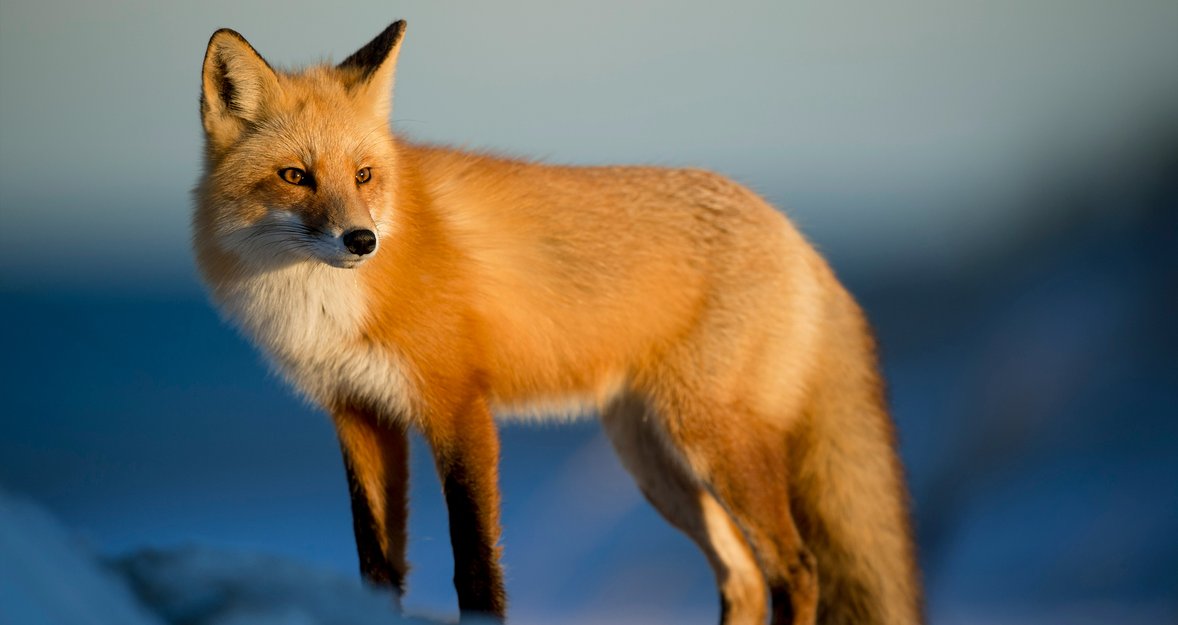Rule of Thirds for Wildlife Photography: Capture More Dynamic Shots
June 05, 2025

Learn how to use the rule of thirds in wildlife photography to elevate your shots from casual to professional. Capture fleeting moments with expert composition tips.
In the world of wildlife photography, moments can be fleeting as a bird takes flight or a deer finally shows itself from the brush. Moments such as these are what make wildlife photography so thrilling and keep photographers coming back for more.
But what sets a hobbyist apart from a professional photographer? It is within these fleeting moments that the professional not only captures the opportunity but also applies photography principles to achieve a high-quality shot.
If you feel like your wildlife shots are missing that final touch of quality, we’ve got you covered. In this article, we are going to look at how introducing the rule of thirds to your shots can instantly improve your photos to a professional level. Let’s get started.
What is the Rule of Thirds?
You may have heard this photography term before, but what exactly is it? The rule of thirds is a fundamental compositional technique in photography. Imagine your frame split by two vertical and two horizontal lines. You now have three equal sections both vertically and horizontally. It is along these lines that you place important elements, such as your subject.
Your AI-Powered Photo Editor for MacOS and Windows
Discover Now!So, as you line up your shot of a puffin on the rocks, instead of placing it in the centre of the frame, position it along one of the vertical lines, leaving space in the rest of the frame. Should we completely avoid positioning our subject in the middle of the shot? Let’s find out.
Why Use the Rule of Thirds in Wildlife Photography?
 Back to the puffin on the rocks. You can absolutely still position it in the centre of the shot, but the rule of thirds could create a much more dynamic image. Let’s take a closer look.
Back to the puffin on the rocks. You can absolutely still position it in the centre of the shot, but the rule of thirds could create a much more dynamic image. Let’s take a closer look.
- Works with Movement: This is one of the biggest benefits of choosing a rule of thirds composition. If your subject is on the move or looking to one side, they now have space to move into or look across.
- Creates Space: A centre-framed subject can sometimes feel too full or busy. Opening up the space in your frame allows the photo to breathe.
- Leads the Viewer’s Eye: With the space freed up and the animal moving or looking in that direction, the image will naturally lead the viewer’s eye. This creates a more dynamic element in your shot.
- Provides More Context: Not only does this approach show where the animal is moving or looking, but it also reveals more of the background. Whether it is mountains, trees or the sea, including more of the environment helps you build a bigger visual story.
While shooting an animal in the centre of the frame is absolutely fine as a compositional choice, the rule of thirds can help you tell a more compelling story if the situation calls for it.
How to Apply the Rule of Thirds in the Field
 Let’s look at some handy ways in which you can apply the rule of thirds to your photos. With enough practice it becomes second nature, so keep practicing with these techniques.
Let’s look at some handy ways in which you can apply the rule of thirds to your photos. With enough practice it becomes second nature, so keep practicing with these techniques.
Use Your Camera’s Grid: Most digital cameras come with a grid system that will be overlaid in your screen preview of the shot. This will give you the visual cues and help on exactly where to position your subject.
Intersections are key: Remember how we have both horizontal and vertical lines? Well it is where these points meet that we can add points of interest. This includes the eye or head of the animal, meaning these crucial elements are at a strong focal point.
Consider the Background: Leaving space in your shot is going to show a great deal of the background, so you need to be mindful of what’s on show. Look for picturesque backdrops that compliment your image, but ensure that they don’t distract from your subject.
Which Side to Leave Space: This part is crucial to get right for a successful rule of thirds composition. You must leave space in the direction the animal is looking or moving towards. Get this the wrong way round, and the viewer will subconsciously ignore the space behind the animal and feel that the photo looks suffocated and not visually pleasing.
Examples of Rule of Thirds in Wildlife Photography
 Now that you are fully equipped with knowledge of when and why to apply the rule of thirds, let’s take a look at situations where it works best. As you gain more experience with photography, it becomes second nature to know which compositional techniques work in a particular moment.
Now that you are fully equipped with knowledge of when and why to apply the rule of thirds, let’s take a look at situations where it works best. As you gain more experience with photography, it becomes second nature to know which compositional techniques work in a particular moment.
Exclusive Tools of Endless Possibilities in One AI Editor
Explore Now!With forms of photography such as wildlife, or even street, we do not have the luxury of controlling our subject. Instead, we must react and capture the fleeting moment in the best way possible. That is when you start to truly excel at your craft.
Birds in Flight
We have mentioned this before, but birds in flight are one of the most common subjects for a rule of thirds composition. There is so much energy and movement within your subject that closing off any space with a centre-frame can prevent that sense of motion from being fully realised. You can position the eye of the bird at a vertical and horizontal intersection to immediately draw the viewer’s attention and create a well-balanced frame.
Groups of Animals
When photographing groups of animals, it can be hard for the viewer to find a clear focal point. This is where the rule of thirds can help. Think of a herd of zebras. While it may look like a mass of black and white stripes, if one zebra’s head and eyes are facing the camera, that becomes your focal point. Placing this point on an intersection will give the viewer something to focus on in an otherwise busy scene, helping to hold their attention.
Facing or Moving Towards
This works for any animal, whether they are running, walking, swimming, or even slithering along the ground. Leave open space in the direction they are facing or moving towards. It is an easy way to create breathing room and add context with visible background. It also provides a dynamic focal point.
Top Tip: Place the eye at the upper intersection of your photo. This ensures you have plenty of headroom above the animal and gives a strong focal point.
Do not worry about your photo looking empty. If you place the animal at an intersection and it is looking or moving in the direction of the empty space, your composition will look intentional and well balanced.
When to Break the Rule of Thirds
 We also want to share some situations where the rule of thirds might not be the best choice. These suggestions will give you further ideas to draw upon when lining up your shot.
We also want to share some situations where the rule of thirds might not be the best choice. These suggestions will give you further ideas to draw upon when lining up your shot.
Symmetry
A classic example is a deer with its impressive antlers looking directly at the camera. The symmetry of the antlers calls for you to centre your subject rather than place it at an intersection. Another example would be a peacock displaying its full array of feathers.
Animal Portraits
Any time an animal is looking directly at your camera, a portrait shot with the animal in the centre of your composition can look fantastic. A grazing lion, a sly fox low in the grass, or a wise old elephant all make for memorable portraits.
Vertical Movement
Sometimes movement can leap upwards or come falling from the sky. In this case, you will want the animal centred in the lower or top third, with the top two thirds of the frame left open for it to jump into, or the bottom two thirds to dive into. Think of a leaping frog or a bird of prey diving for a kill. These situations require a different approach to animals moving across the frame. When this occurs, opt for a portrait aspect ratio to enhance the sense of space and movement.
When You Want to Get Creative?
Photography has compositional rules, but creativity knows no bounds. Do not feel restricted to follow these techniques as if they were laws. Experiment and explore. If you want to try something new, go ahead. This is how you can develop your own signature look and style, and you should always feel encouraged to follow whatever your imagination dreams up.
The Bottom Line
When it comes to wildlife photography, the rule of thirds can help you capture more dynamic shots with ease. It is a simple technique that suddenly opens up space and creates the sense of movement within a still image. Whenever the animal you are photographing is on the move or looking in a particular direction, leave space in that direction within the frame.
Switch on the grid guidelines in your camera settings and position the eye or head of the animal at the intersection of the vertical and horizontal lines, with the space they are facing occupying the larger portion of the frame.
Remember that the rule of thirds is just one of many compositional techniques used in photography. With practice, it will become second nature to know which method will suit the moment best. Keep working with this technique and soon you will use it instinctively. Get out there and enjoy the exciting world of wildlife photography.





